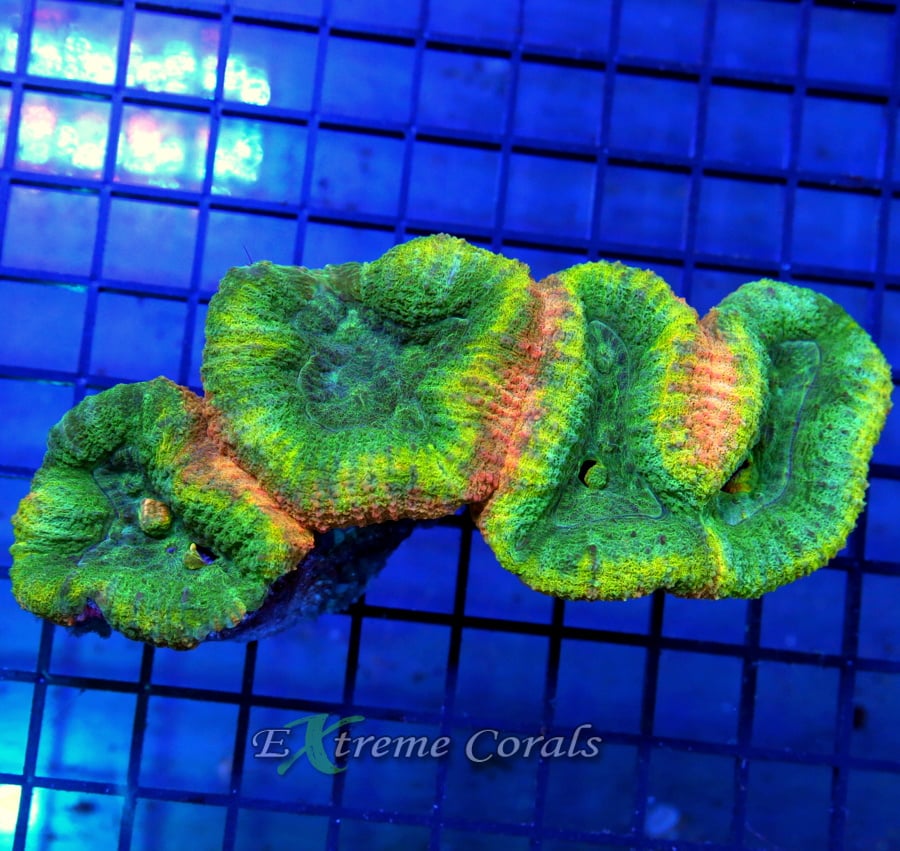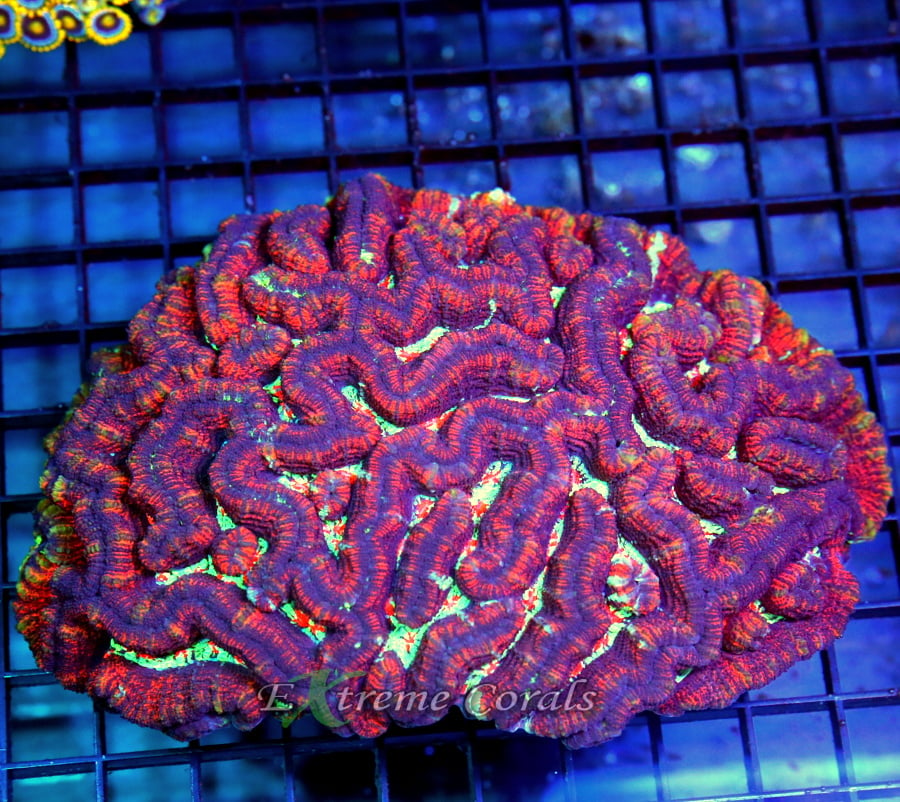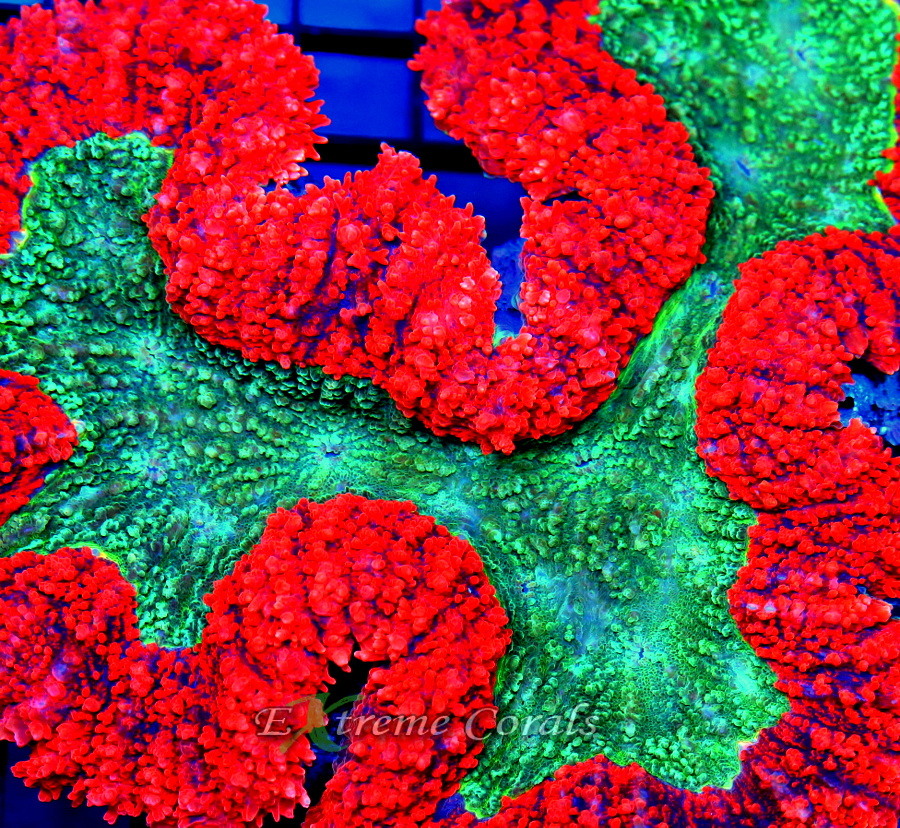Extreme Corals News and Updates
Mastering the Care of Lobophyllia and Symphyllia Corals in Reef Aquariums
Lobophyllia and Symphyllia corals are captivating additions to any reef tank, each bringing their own unique charm and characteristics. Find the correct ways to care for each within this article
Understand the difference in care between two popular Corals, Lobophyllia and Symphyllia.
by scott Shiles • August 17, 2023
Lobophyllia and Symphyllia corals, commonly known as "Lobo" and "Lobed Brain" corals, respectively, are prized members of the reef aquarium community. Their stunning beauty and relatively easy care requirements make them popular choices among enthusiasts. In this comprehensive guide, we will embark on an in-depth exploration of these remarkable corals, delving into their unique characteristics, care requirements, and the intricacies of maintaining optimal conditions in your reef aquarium
Lobophyllia Corals:

Lobophyllia corals, commonly referred to as "Lobo" corals, are a genus of large polyp stony (LPS) corals that exhibit intricate and often vibrant coloration. These corals have a distinct appearance with large, fleshy polyps that extend during feeding and display a wide array of colors ranging from intense greens and blues to rich reds and oranges. Lobophyllia corals have a tendency to form deep, rounded or brain-like structures, creating a captivating visual effect in the aquarium.
Symphyllia Corals:

Symphyllia corals, also known as "Lobed Brain" or "Closed Brain" corals, are another fascinating genus of LPS corals. These corals showcase a unique texture with convoluted, lobed polyps that can partially or fully encase the coral's skeleton. Symphyllia corals typically exhibit more subdued coloration compared to Lobophyllia, with shades of brown, green, and occasionally, hints of purple. Despite their less intense color palette, Symphyllia corals make up for it with their intricate patterns and captivating growth forms.
Understanding Lobophyllia and Symphyllia Corals
Belonging to the families Merulinidae and Lobophylliidae, Lobophyllia and Symphyllia corals exhibit distinct features that set them apart. Lobophyllia corals boast large, fleshy polyps and a vibrant color palette, ranging from intense greens and blues to rich reds and oranges. Their unique morphology often forms deep, rounded, or brain-like structures, adding depth and visual interest to any aquarium. In contrast, Symphyllia corals display more subdued coloration but compensate with intricate patterns and lobed growth forms. Their convoluted polyps partially or fully encase the coral's skeleton, creating a mesmerizing textured appearance.
Care Requirements
Achieving success in caring for Lobophyllia and Symphyllia corals requires meticulous attention to their specific needs. These corals thrive under moderate lighting conditions, typically requiring around 150-200 PAR. While they prefer low to moderate water flow, they can adapt to varying levels. Maintaining stable water parameters is crucial, including temperature (75-80°F), salinity (1.025 specific gravity), pH (8.1-8.4), alkalinity (8-12 dKH), and calcium (400-450 ppm).
Feeding Habits
While photosynthesis is the primary source of nutrition for Lobophyllia and Symphyllia corals, supplementing their diet with meaty foods can enhance their health and vibrancy. Offerings such as mysis shrimp or coral-specific blends, provided 1-2 times per week, serve as nutritious supplements. Target feeding using a baster ensures that the corals receive the food directly, maximizing nutrient intake.
Placement and Aggression Management
Strategic placement within the aquarium is essential to prevent territorial aggression and minimize the risk of tissue damage. Adequate spacing between corals and consideration of sweeper tentacle extension at night can help mitigate aggression. Optimal placement involves positioning the corals on the substrate or elevated rock structures where they can receive appropriate lighting and water flow.
Monitoring and Maintenance
Regular monitoring of water parameters, coral health, and growth is paramount for maintaining a thriving reef aquarium. Signs of stress, such as tissue recession or color loss, should be addressed promptly by adjusting lighting, flow, and feeding regimes as needed. Routine tank maintenance, including water changes and algae control, contributes to a healthy environment for Lobophyllia and Symphyllia corals.
Extreme Corals
For enthusiasts seeking top-tier coral specimens, Extreme Corals is a trusted source. With a focus on sustainable coral farming practices and ethical sourcing, Extreme Corals offers a diverse selection of vibrant and healthy colonies. Their knowledgeable staff provides expert advice and personalized service, ensuring a rewarding experience for every customer.
Expanding Your Reef Aquarium Experience
Beyond Lobophyllia and Symphyllia corals, there is a vast array of other coral species and marine life to explore. Incorporating a diverse range of corals, including LPS (Large Polyp Stony), SPS (Small Polyp Stony), and soft corals, can add depth and complexity to your reef aquarium. Additionally, introducing compatible fish species, invertebrates, and live rock can further enhance the ecosystem and create a dynamic underwater environment.
Creating a Natural Habitat
In addition to coral and fish selection, recreating a natural habitat within your aquarium is essential for the health and well-being of its inhabitants. Utilizing live rock and live sand can help establish beneficial bacteria colonies, contributing to the biological filtration of the tank. Incorporating natural décor elements such as caves, crevices, and overhangs provides hiding places and shelter for fish and invertebrates, mimicking their natural habitat.
Water Quality Management
Maintaining optimal water quality is paramount for the success of any reef aquarium. Regular testing for parameters such as ammonia, nitrite, nitrate, and phosphate helps ensure a stable and healthy environment for coral and fish alike. Utilizing high-quality filtration systems, protein skimmers, and UV sterilizers can aid in removing waste and preventing the buildup of harmful compounds.
Challenges and Solutions
Despite the rewarding experience of keeping Lobophyllia and Symphyllia corals, hobbyists may encounter challenges along the way. Issues such as coral bleaching, algae outbreaks, and coral diseases can occur. However, with proper knowledge and proactive measures, many of these challenges can be addressed effectively. Implementing quarantine procedures for new additions, practicing good husbandry, and conducting regular maintenance can help mitigate potential problems.
Lobophyllia and Symphyllia corals are treasures of the reef aquarium hobby, captivating enthusiasts with their beauty and grace. By understanding their unique characteristics and meeting their specific care requirements, hobbyists can cultivate thriving coral colonies that enhance the beauty of their underwater ecosystems. With trusted partners like Extreme Corals providing support and top-quality specimens, creating and maintaining a breathtaking reef aquarium becomes an attainable reality for all reef enthusiasts. Whether you're a novice or experienced hobbyist, the journey of exploring and nurturing your reef aquarium is one filled with wonder and fulfillment.

